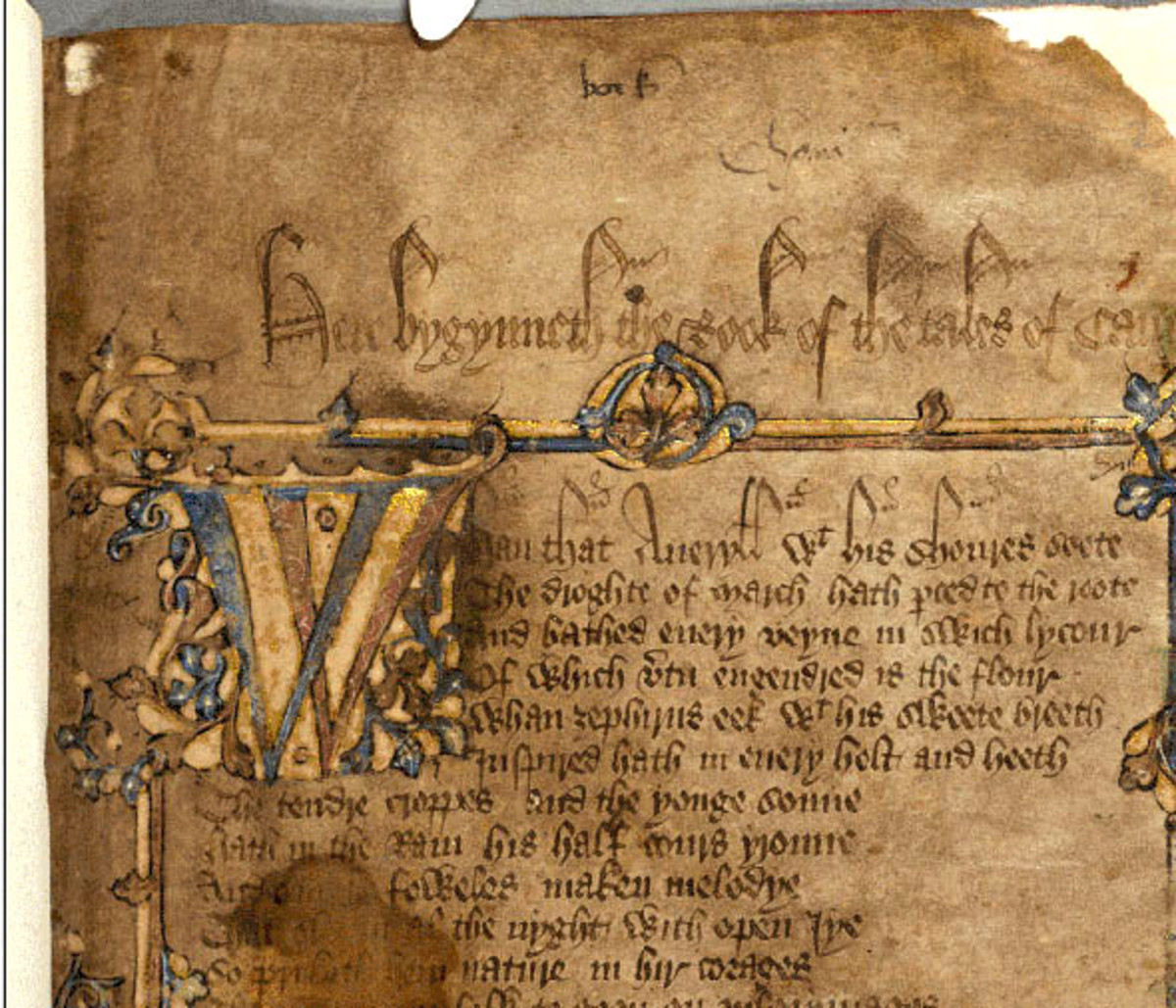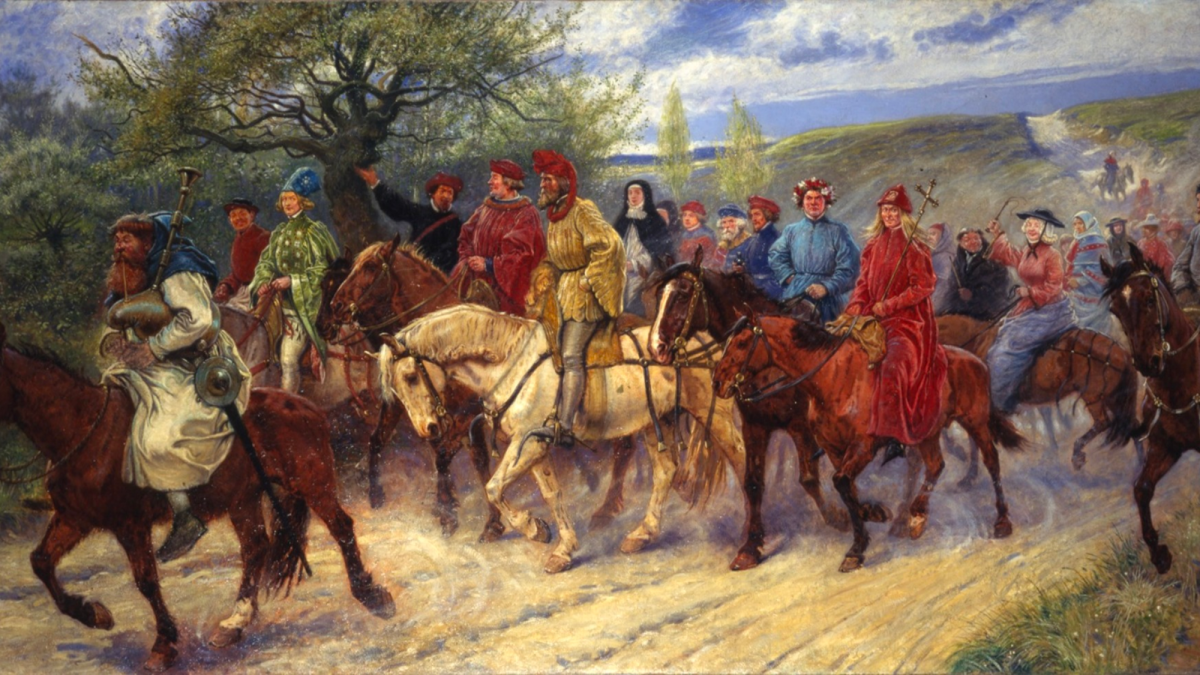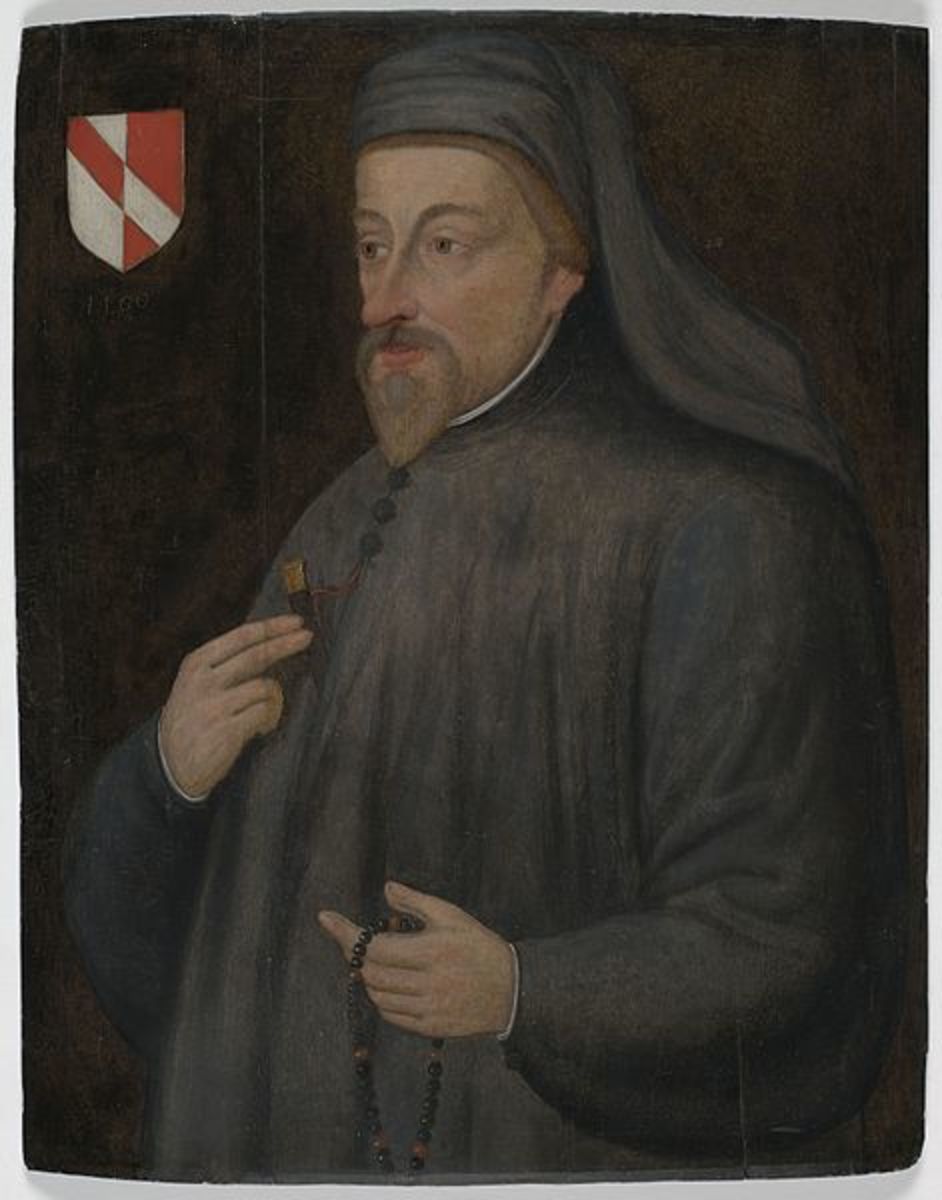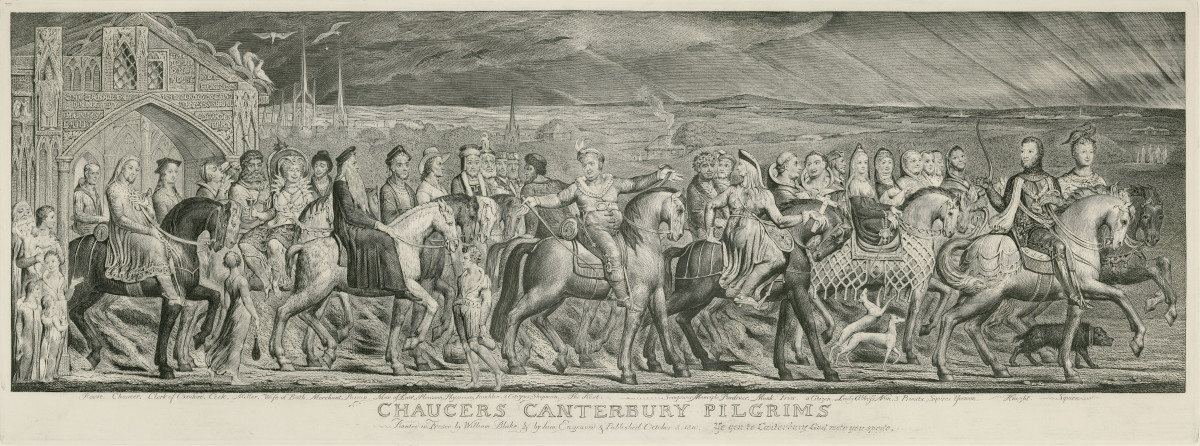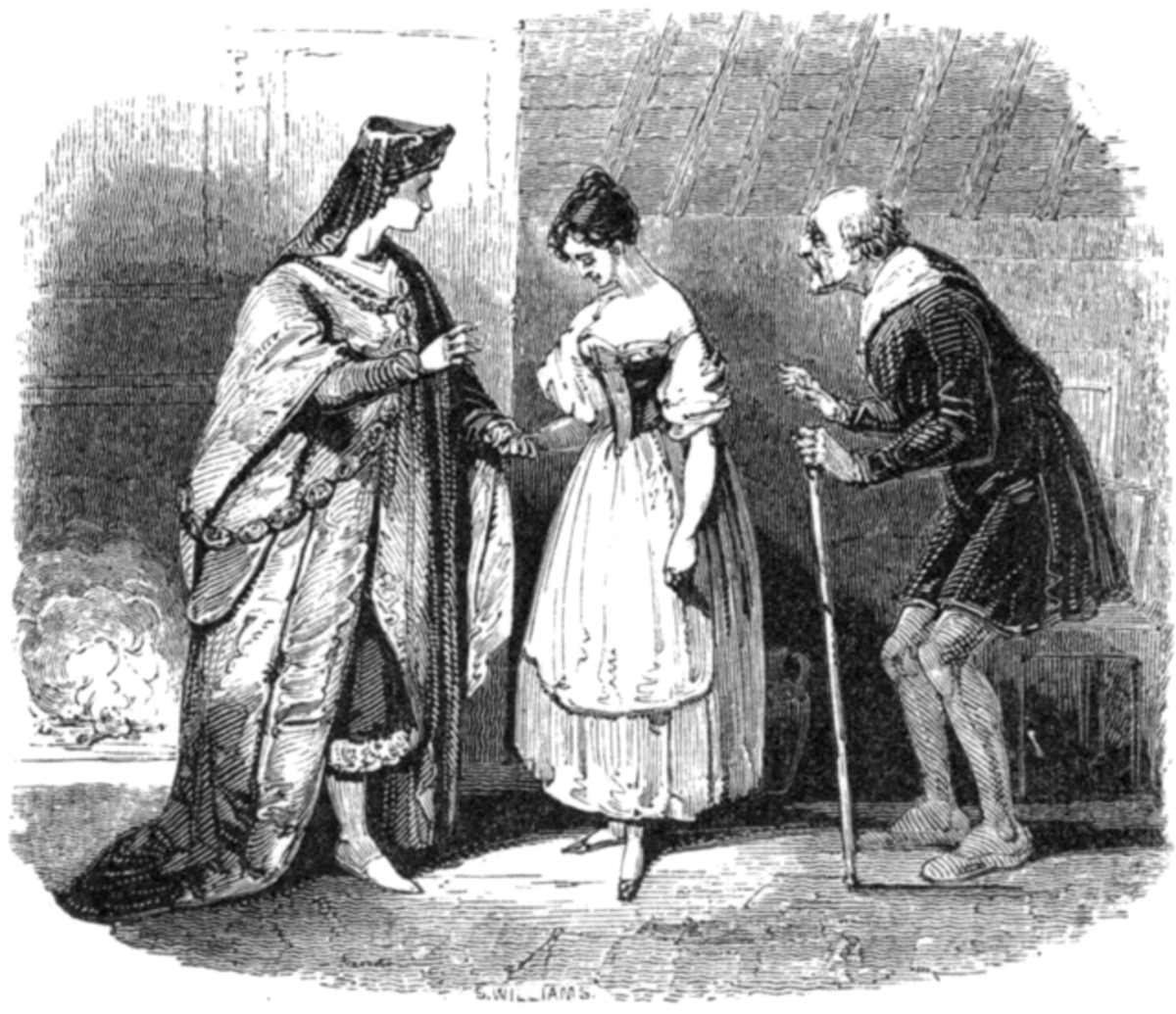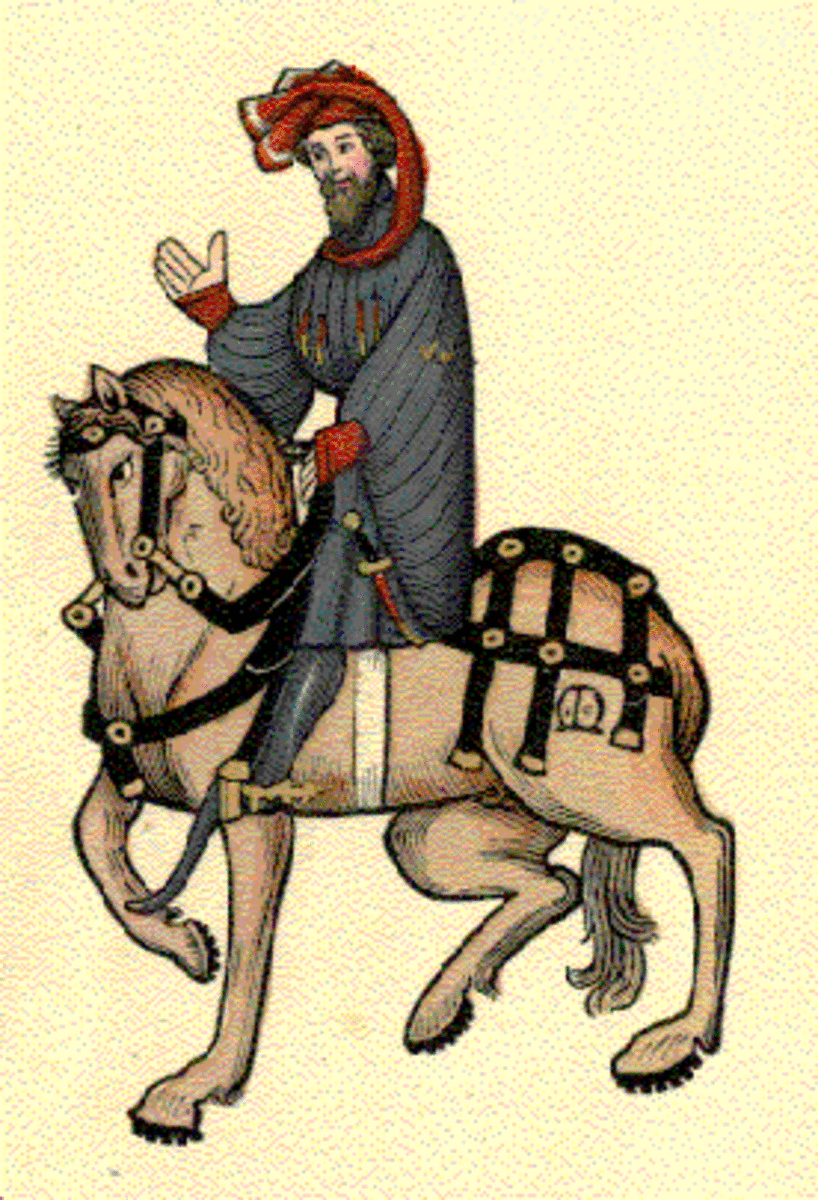- HubPages»
- Books, Literature, and Writing»
- Literature»
- English Literature
An Essay on The Miller's Tale
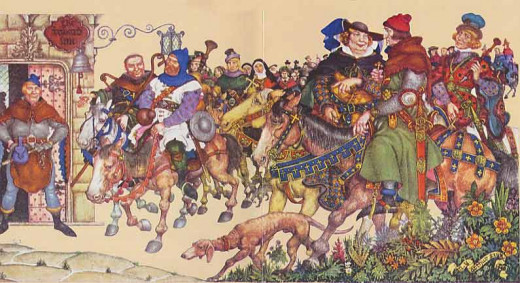
The machinations of a literary text often act as a reflective glass; showing its readers a mirror of reality and our humane roles that we part take in it. We often see a reflection of the world through the author’s eyes; not simply a distinct era of history, with its unique structure and customs, but also a novel view of philosophy and psychology that is omnipresent; surrounding us in all eras: past, present, and future. A prevalent topic written about throughout history is human nature.[1] Human nature often begs questions such as: Are people naturally good? Are they naturally bad? Is man an invention of recent date? Is man a machine? Even in English’s earliest literature, the topic of human nature is surfaced. In fact, it is often a central issue that is essential in understanding a text. Chaucer’s Canterbury Tales, for example, attempts to ‘defamiliarize’[2] its readers from the importance that physical proximity (that is, corporeal nearness) can play on influencing propinquity (or emotional nearness).[3] Ultimately, recognizing this theme in the Canterbury Tales, specifically The Miller’s Tale, can lead to a greater understanding of the text as a whole.
With a broad eye, one may notice that physical proximity influences many themes surrounding The Canterbury Tales. Chaucer brilliantly understands how something as simple as distance versus closeness, an unmistakable familiarity that is often overlooked every day, in part of their abstraction and generality, can influence larger, and more obvious themes such as social class, love, sex, competition, and even proper conversation versus casual causerie. For example, in The General Prologue, Chaucer strategically situated the setting of the story in a tavern outside a major city, Canterbury. More so, Canterbury was a major pilgrimage destination for Catholic folks. Thus, a potpourri of characters from various backgrounds soon met up for some drinks and told each other their tales. The idea is that Chaucer chose this specific setting knowing that it would create a neutralizing effect. Since this tavern was full of people from all backgrounds, social class was more or less irrelevant, because the tavern was far enough from the city, proper conversation could be abandoned, and the effects of alcohol brought about crude subjects with little resistance from there surrounding drunken fellows. Furthermore, often times during these drunken escapades, humorous competition arose out of the various raconteurs; vying against each other to tell the most ridiculous tale.[4] Essentially, the concept of physical proximity truly sets the foundation for many of The Canterbury’s emerging themes throughout the story such as The Miller’s Tale.
The Miller’s Tale, according to traditional thought, could be interpreted into a tale about poetic justice, lies & deception, animal nature versus human nature, or a humorous chuckle at the lower class. I do not disagree, for those themes are deliberately expressed throughout the text. In fact, I will deconstruct these themes initially in order to reveal its roots. The Miller’s Tale’s foundation, I find, may rest upon the relationship between physical proximity and propinquity. Furthermore, I sense that Chaucer is attempting to defamiliarize its readers to this notion with regards to the competitive nature of sexual relationships, attractiveness between partners or potential partners, and the methods and motives behind those people.
Before we discuss the relationship between physical proximity and propinquity in The Miller’s Tale, we must recognize thatthe primary theme is love; Alisoun and John’s unhappy and unconventional marriage, Nicholas’s deceitful tricks to win over Alisoun, Absolon’s formal attempts at courting Alisoun, and Nicholas and Alisoun’s trickery against both John and Absolon. Obviously, love is the driving force that propels the plot all the way to the end of the story. However, Chaucer is clearly trying to tell us something more subliminal about love and the functions behind it, particularly how sexual relationships function, yet subtly revealing the role by which physical proximity and propinquity will play in it.
Chaucer begins to draw us into realizing how sexual relationships function in regards to relationship between physical proximity and propinquity in lines 113-118:
“This carpenter hadde wedded newe a wyf
Which the he lovede more than his lyf;
Of eightetene yeer she was of age
Jalous he was and heeld hire narwe in cage,
For she was wilde and yong, and he was old
And demed himself ben lyk a cokewold.”[5]
Thus, from the dawn of the story, Chaucer paints this situation of sexual tension, in which physical proximity is a major factor. John clearly is afraid for any man to get too close to his wife physically because he senses that if one did, it would lead to emotional closeness between them and ultimately, she would ‘cheat’ on him.
From the above quote, Chaucer also hints towards the relationship between the young and the old. Perhaps, Chaucer is further explicating the concept of physical proximity and propinquity. It seems as if John feels remote (The feeling of being physically further than he really is, but actually the feeling has nothing to do with physical proximity, rather he is emotionally disconnected) from Alisoun because of their physical differences. Thus, it may be inferred that physical proximity may not only be influenced by corporeal nearness, but also bodily similitude.
This explication of physical proximity can also be exemplified when Nicholas and Absolon are competing for Alisoun’s love. Nicholas is characterized by his handsomeness and his aggressive methods, while Absolon is characterized by his gentleness and romantic methods; lines 278-279:
For some folk wol ben wonnen for richesse, And som for strokes, an som for gentillesse.
Essentially, Chaucer is summarizing the methods by which Alisoun’s lovers employ; John offered her “richesse”, Nicholas was physically aggressive, and Absolon preferred to be noble and romantic.
According to the previous quote, in regards to the relationship between physical proximity and propinquity, is seems that Absolon had no chance to compete against Nicholas from the beginning. Nicholas had both advantages of being closer by corporeal nearness and a superior bodily appearance, more similar to the fair and lovely Alisoun. Furthermore, Nicholas’s aggressive seduction method was more effective because it essentially eliminated the corporeal nearness between them literally, ultimately increasing the propinquity between him and Alisoun by force. Whereas Absolon’s romantic seduction method did nothing to test the physical proximity between him and Alisoun, rather it was very conservative and it resulted in a stagnate connection, reducing propinquity between him and Alisoun. This is further exemplified by Chaucer in lines 288-290:
“Ful sooth is this proverb, it is no lye,
Men sayn right thus, ‘Alwey the nye slye
Maketh the ferre leve to be looth.’”
Here, Chaucer openly tells the reader that sexual propinquity (feelings of love, lust, or attraction) is cultivated by physical proximity, specifically, Chaucer says that the closest competitor (that is in corporeal nearness) will always win the girl, and the furthest competitor has no chance. Ultimately, this simple proverb reflects the entire plot of The Miller’s Tale; it has a foreshadowing aspect, as if Chaucer was faintly giving away the resolution of the tale early on.
Thus, the relationship between physical proximity and propinquity was deliberately placed in The Miller’s Tale. It is an essential concept that helps develop the prevalent themes to their end and drive the plot to its incredibly original ending. This idea that corporeal nearness can influence emotional connections provides the foundation for the entire Canterbury Tales. More so, Chaucer brilliantly recognizes this and employs this effect in his writings to make sense of ambiguous, every day questions such as; how is love cultivated? What influences a love connection? How does a love triangle untangle itself? What influences the way it will unfold? Who will win the love competition?
In essence, Chaucer is trying to enlighten his readers to these questions and provide them with answers that he offers in his writings. He does this by employing a defamiliarizing device through use of formalistic techniques. Chaucer uses a style known as the fabliau which acts as a satire; it emphasizes the most important aspect of the story through very humorous language. For example, lines 624-627 show how Chaucer plays with the relationship between physical proximity and propinquity by tricking Absolon into thinking he has finally eliminated the corporeal boundaries between him and Alisoun, and ultimately leading to their mutual love, however, the situation ironically resulted in the termination of all potential propinquity.
Chaucer also uses setting and plot to his advantage to express the relationship between physical proximity and propinquity. For example, Lines 163-167 show how Chaucer is manipulating his characters to act in a similar way by which lines 288-290 expressed:
“Now sire, and eft sire, so bifel the cas That on a day this hende Nicholas Fil with this yonge wif to rage and playe, Whil the hir housbonde was at Oseneye…”
In essence, this quote explains how when John leaves to go to Oseneye, Nicholas takes his chance to push his corporeal boundaries with Alisoun in order to win her over.
Also in regarding to defamiliarization of the relationship of physical proximity and propinquity, lines 248-251 show how Chaucer symbolically sets Absolon in a place where he cannot overcome his physical boundaries to Alisoun:
“Til he cam to the carpenteres hous,
A litel after cokkes hadde ycrowe,
And dressed him up by a shot-windowe,
That was upon the carpenteres wal.”
In effect, the wall physically separates Absolon from both the object of desire, Alisoun, and his competition, Nicholas, making his situation desperately impossible according to the author’s proverb on lines 288-290.
Lastly, Chaucer defamiliarized The Miller’s Tale by simply choosing a themethat every human being can relate to, love, yet making its plot so wildly absurd that it forces readers to step back and rethink their notion of what love is; which is the essence of defamiliarization as a device, to make the known unknown. Chaucer simply wants to bring attention to this very ‘human’ feeling.
In the end, The Canterbury Tales is a story of social class, love, sex, competition. These themes function on the notion that physical proximity influences propinquity. This notion drives the characters relationships to grow, fade, and fight according to their own desires and positions. This ultimately drives the plots to its demise. The Miller’s Tale was a prime example of this forceful connection, and understanding it is useful when reading the text as a whole.
[1] Human nature, in its philosophical aspects, is a broad topic covering several branches of philosophy including ethics, epistemology, aesthetics, and history.
[2] Literary Criticism device proposed by V. Shklovsky in his Art as Device (1917). Defamiliarization is a device that ethically charges the mundane or ordinary, in order to provoke awareness of the artfulness of the object or concept.
[3] In social psychology, propinquity is one of the main factors leading to interpersonal attraction. Piercy’s Interpersonal attraction as a function of propinquity in two sensitivity groups hasshown that the closer physical proximity, the higher propinquity. For example, if two people are living on the same floor of an apartment, they will have a higher propinquity with each other compared to other residents living on separate floors or separate buildings.
[4] Following the Knights Tale in the beginning of The Miller’s Prologue (Pg. 264, lines 6-9), the Host provokes his crowd into this competition of raconteurs; “Oure Hoste lough and swoor, ‘So mote I goon, This gooth alright: unbokeled is the male. Lat see now who shal telle another tale. For trewely the game is well bigonne.’”.
[5] Chaucer is expressing John’s fear of sexual competition from younger men vying for his young wife, thus, John keeps Alisoun locked up and physically distant from other men.


